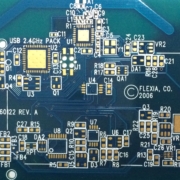Sustainable Practices in PCB Supply Chain: A New Era?
As global industries shift toward environmentally conscious operations, the PCB supply chain is no exception. From raw material sourcing to end-of-life recycling, every aspect of the printed circuit board (PCB) lifecycle is under scrutiny. Today, being a PCB supplier isn’t just about delivering high-quality products—it’s also about taking responsibility for the planet.
Sustainability is no longer optional; it’s a necessity. Whether driven by regulation, market demand, or corporate values, embracing sustainable practices in the PCB supply chain is ushering in a new era—one marked by innovation, transparency, and accountability.
Why Sustainability Matters in the PCB Industry
PCBs are vital to virtually all modern electronics, from smartphones to electric vehicles. But this essential technology comes with an environmental cost. Traditional PCB manufacturing involves energy-intensive processes, hazardous chemicals, and significant material waste. The global push for cleaner electronics has prompted many in the industry to reevaluate their supply chain practices.
As a PCB supplier, implementing sustainability means actively reducing environmental impacts at every stage—starting from material selection, through manufacturing, to shipping and product end-of-life.
Key Sustainable Practices Transforming the PCB Supply Chain
1. Eco-Friendly Materials
Using lead-free solder, halogen-free laminates, and recycled copper foils are becoming standard. Eco-certified materials reduce pollution and improve the recyclability of PCBs. As a forward-thinking PCB supplier, investing in sustainable materials not only meets regulatory requirements but also appeals to environmentally aware customers.
2. Energy-Efficient Manufacturing
Optimizing factory energy consumption can drastically cut down carbon emissions. Manufacturers are now adopting renewable energy sources and energy-saving equipment to power their operations. Automation and AI-driven systems are also being deployed to reduce energy waste, contributing to both environmental goals and cost efficiency.
3. Waste Reduction and Recycling
A key part of sustainable supply chains is minimizing waste. Companies are implementing closed-loop systems to recycle water, chemicals, and scrap materials. For PCBs, this includes recycling metal scraps like copper and gold, and reusing components where possible.
If you’re looking to understand how your company can benefit from these processes, you can Find Out More through dedicated sustainability resources.
4. Green Logistics
The environmental impact of transportation is often overlooked. PCB suppliers are beginning to reduce their carbon footprint by optimizing logistics routes, using biodegradable packaging, and partnering with carriers committed to green delivery practices.
Even small changes—like switching to local suppliers for certain components—can significantly reduce emissions over time.
5. Ethical Sourcing and Transparency
A sustainable supply chain isn’t just green—it’s also ethical. This means sourcing raw materials responsibly and ensuring that labor practices throughout the supply chain meet international standards. Transparency tools, like blockchain, are increasingly used to provide real-time visibility into sourcing and shipping, enhancing both trust and compliance.
To learn how blockchain is revolutionizing supply chain transparency, you can find out more from emerging tech partners in the industry.
Benefits of a Sustainable PCB Supply Chain
Transitioning to sustainable practices brings multiple advantages beyond environmental impact. Here’s what a PCB supplier can expect:
- Competitive Advantage: More consumers and manufacturers are prioritizing eco-friendly partners.
- Regulatory Compliance: Meeting stringent environmental regulations like RoHS, REACH, and WEEE becomes easier.
- Cost Savings: Energy efficiency and material recycling can significantly reduce operational costs.
- Improved Brand Reputation: Being known for sustainability boosts stakeholder confidence and customer loyalty.
Challenges to Adoption
Despite the benefits, the journey toward sustainability isn’t without hurdles. Some common barriers include:
- High Initial Costs: Upgrading machinery and sourcing eco-friendly materials often require upfront investments.
- Lack of Awareness: Many traditional PCB suppliers are unaware of emerging green technologies.
- Complex Supply Chains: Tracing sustainability across global suppliers can be difficult without advanced systems.
Still, the long-term ROI often outweighs these short-term challenges, especially as regulations tighten and demand for green products grows.
How to Get Started
For PCB companies looking to begin their sustainability journey, here are a few first steps:
- Conduct a Sustainability Audit: Evaluate where your company stands in terms of energy use, waste, and ethical sourcing.
- Engage Your Suppliers: Work with suppliers who share your sustainability goals.
- Certify and Educate: Pursue certifications like ISO 14001 and invest in training your team on sustainable practices.
Taking even small, measurable steps can make a big difference. Go right here for resources on certifications and guidelines tailored to electronics manufacturing.
The Future Is Green
The electronics industry is evolving rapidly, and PCB suppliers who embrace sustainability now will be better positioned for the future. Beyond regulatory compliance, sustainability fosters innovation, reduces costs, and builds lasting customer trust.
With growing pressure from governments, partners, and consumers alike, it’s time for every PCB supplier to become a leader in sustainable innovation. This new era is not just about the survival of businesses, but about contributing to a healthier planet.

